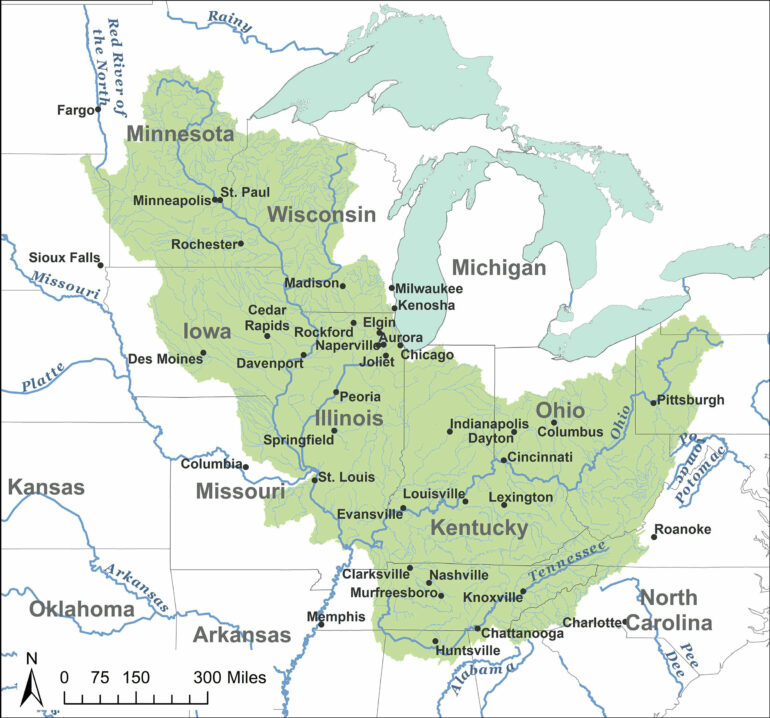A new special edition of the Proceedings of the National Academy of Sciences (PNAS) focuses on helping federal regulators measure the value that U.S. residents place on clean water, just months before the Supreme Court is set to decide a case with significant implications for the Clean Water Act.
The issue was proposed and co-edited by economist Catherine Kling, faculty director of the Cornell Atkinson Center for Sustainability, along with two academic colleagues, at University of Massachusetts, Amherst and University of Wisconsin, Madison, and two Environmental Protection Agency economists. The edition, published May 2, should also shed light on discussions around the EPA’s much-revised “Waters of the United States” regulation, which went into effect in March and has been a source of long-standing political debate.
“We’re not advocating for or against any particular regulation; this is our best effort at science,” said Kling, the Tisch University Professor of Environmental, Energy and Resource Economics in the Charles H. Dyson School of Applied Economics and Management and the Cornell Jeb E. Brooks School of Public Policy. “We’re trying to fully document the benefits as compared to the costs and provide the best, defensible tradeoff numbers that we can so that EPA can make the most appropriate regulations.”
Chris Moore, an EPA economist and co-editor of the special issue, said the EPA can use the new research to improve its economic analyses and estimate more types of benefits from water quality improvements.
“Valuing the social benefits of programs that improve water quality is especially difficult because of the many ways that people rely upon clean water,” Moore said. “Figuring out who will be affected by a given action and how to estimate the economic impacts is uniquely challenging when aquatic resources are involved. The research featured in this special issue makes important advances on several fronts that address those challenges.”
50 years of the Clean Water Act
The Clean Water Act was passed with overwhelming bipartisan support in 1972; though vetoed by then-President Richard Nixon, Congress overrode his veto to enact the law. In the 50 years since its implementation, the Clean Water Act has enabled regulators to require companies to stop dumping oil and toxic chemicals directly into the nation’s waterways and to require local municipalities to treat sewage before release, among other provisions. Although U.S. water quality has improved significantly since 1972, challenges remain: Almost half of rivers and streams are in “poor biological condition and 21% of the nation’s lakes have excessively high levels of nutrients and algae,” according to the introduction in the PNAS special edition.
In 1986, then-President Ronald Reagan issued an executive order requiring federal regulators to undertake benefit-cost analyses for almost every rule. This resulted in regulators scrambling to assess the economic value of natural resources.
“It’s much easier to figure out the cost piece: Companies will have to regulate something or put on pollution control. The harder part to value is the benefit,” Kling said. “But just because something isn’t bought and sold doesn’t mean people don’t value it. And if we had to, many of us would pay money rather than see a park eliminated or our water quality degraded. That’s the concept of economic value.”
Advancing the science of public benefit
Even before Reagan’s executive order, scientists had been working to understand how the public values noncommercial resources like clean air and water. A groundbreaking 1981 study used a nationwide survey to ask residents how much they would be willing to pay in taxes and higher prices to improve the nation’s water quality to one of three standards: boatable, fishable and swimmable. The first national survey of its kind, the study found strong support for improved water quality, and the EPA relied upon the study for a variety of regulations, including one that limited the release of organic chemicals, plastics and synthetic fibers into waterways.
The scientists who contributed to the water quality research in PNAS this month have built upon that foundation and upon the 50 years of research since in the fields of economics, natural resources, ecology, sociology, survey methods, and more, Kling said. For example, survey research has consistently found that people assign intrinsic value to natural resources whether or not they engage in outdoor recreation; New Yorkers value the existence of black bears in the state even if they never go hunting, surveys have repeatedly found.
In their study reported in PNAS, Kling and her co-authors attempted to measure such intrinsic benefits of clean water in a survey of 2,000 households across the Midwest, in the upper Mississippi, Ohio and Tennessee river basins. In addition to questioning residents about outdoor recreation, they measured how much respondents value biodiversity by showing graphical representations of native species that could live in water at various quality levels. They found that residents were willing to pay $456 per household per year in additional taxes or higher prices to support cleaner water. Across the entire region, that means residents value the benefits of clean water $10.5 billion above what is already being spent.
“By partnering with ecologists and economists, we can understand how water equality is more broadly valuable, not just to swimming but also to habitat and preservation of natural resources,” Kling said. “And by partnering with EPA, we are trying to ensure that the information we produce is answering the questions regulators need to answer in order to make the best possible decisions about how to allocate our tax dollars.”
More information:
Christian A. Vossler et al, Valuing improvements in the ecological integrity of local and regional waters using the biological condition gradient, Proceedings of the National Academy of Sciences (2023). DOI: 10.1073/pnas.2120251119
Special PNAS edition: www.pnas.org/toc/pnas/120/18
Provided by
Cornell University
Citation:
Measuring the value that US residents place on clean water (2023, May 1)



